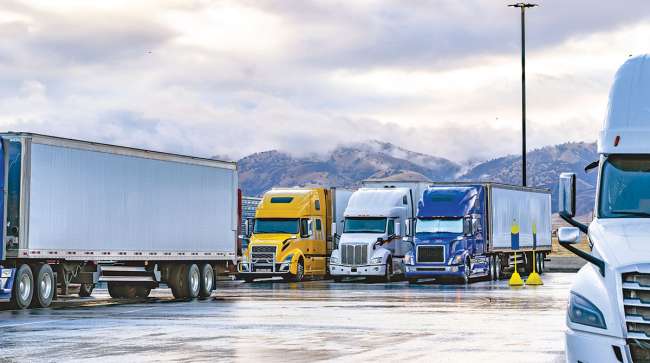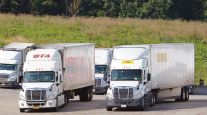Senior Reporter
Truck Parking Front and Center at TRB

[Stay on top of transportation news: Get TTNews in your inbox.]
WASHINGTON — Transportation officials meeting at the Transportation Research Board Annual Meeting heard several proposals to solve the truck parking shortage.
“All the presentations focused on ways to develop more trucking parking. We are trying to develop mechanisms to allow state DOTs to target investments on parking,” said American Transportation Research Institute Senior Vice President Dan Murray, who led one of the discussions. “This would allow states to know, with great accuracy, where capacity is needed and where it is not.”
Some attendees believe transportation officials can develop and use artificial intelligence and other technological advancements to give truck drivers more real-time information about when and where spaces are available. It comes at a time when the public and private sectors are planning to spend money on increasing capacity, and Congress is looking at a $700 million funding package.
Officials with the Texas A&M Transportation Institute presented information on the early stages of a project they are working on that would use crowd-sourced data, predictive analysis and other tools to measure daily highly traveled freight traffic routes. The initiative would monitor the number of trucks on a highway or road, how long they have been traveling and determine when they would need to stop. When measured over weeks and months, they believe they can establish patterns and determine when spaces are available.

Murray
“Right now, there is not a good system to send information to drivers, and many DOTs have started to install sensors at those parking sites where they can send the information to the drivers. But sensors are costly to install and maintain,” TTI researcher Jack Kong told Transport Topics. “It’s almost impossible to install sensors at all the parking spots, but what if we can do a model where we learn the patterns, get the data, analyze it and connect the dots and make the predictions, and our model would be able to predict the demand in 24 hours very accurately.”
Kong said the research on the computer program he and his team have put together is nearly ready, but they are working with states on acquiring more sensor data, but that could still take years.
“It costs money to install the sensors and more money to maintain them,” he said. “But the program works.”

Kong
Another presentation looked at research underway in Missouri by the state’s DOT and Cambridge Systematics that identified and ranked 18 potential truck parking spots in the state. The study will estimate the benefits of these projects in 30 years in terms of safety, environmental impacts, trucking costs, congestion, noise and infrastructure damage.
“In many places, demand for truck parking is exceeding the capacity of existing parking facilities, leading to safety risks and inefficiencies in the trucking sector. This study implemented a two-stage prioritization framework to identify and rank truck parking projects in Missouri so that the state’s investments have the most positive impacts,” the study’s six authors wrote in their executive summary.

Virginia officials said the state’s 22 regional planning authorities are not devoting enough time to truck parking. They noted that parking demand at truck rest areas is expected to increase by as much as 20% during the next two decades.
Another issue is truck staging — ensuring there are adequate locations off-site to situate trucks before and after loading. The Virginia DOT conducted a pilot program, and officials said, “Truck freight planning can be encouraged by tailoring practices to tightly defined regional interests: In this particular case, the region’s key question was not on-site truck parking at rural freight generators but rather how future land use might stimulate off-site parking demand near delivery points.”
In this special year-in-review episode, we delve into the journey and future of alternative fuel trucks. How are they paving the way for a greener 2024? Tune in above or by going to RoadSigns.ttnews.com.
A fourth study conducted by University of California-Davis researchers looked at factors that influence truck idling and parking issues in communities designated as Environmental Justice Areas, in which 20% or more of the community is classified as living below the poverty line and 30% or more of the population is a minority.
“The estimated predictive models forecast truck idling and parking search times, indicating potential applications in strategic urban planning to minimize environmental impacts,” the report’s two authors wrote. “The study identifies extended idling and parking search times as contributors to increased emissions, highlighting the need for efficiency in truck operations and appropriate parking planning.”
ATRI’s Murray said the TRB presentations show that truck parking is getting the attention it deserves in the political and private sectors, and with research in the academic area.
“This is an issue we can’t ignore anymore,” he said.
Want more news? Listen to today's daily briefing below or go here for more info:





